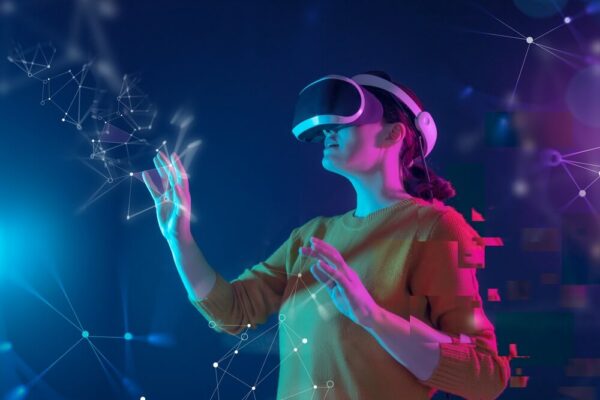

There is little doubt that the battle between the employer and the employee over workplace location continues to be fought. Still, the war could be won by integrating Artificial Intelligence (AI) and Augmented Reality (AR) technologies into the workplace, reshaping office environments like never before. The pandemic closed the door on static cubicles and mundane meetings, and we can agree that the future of office workspaces is dynamic, interactive, and infused with innovation, but where will AI and AR feature, and how can it bridge the divide between place, space and face?
Let’s delve into the exciting trends and possibilities that AI and AR bring to the modern workplace.
Artificial Intelligence is no longer confined to science fiction; it’s a tangible force driving efficiency and productivity in office spaces. From streamlining mundane tasks to enhancing decision-making processes, AI empowers employees to focus on high-value work while delegating repetitive tasks to intelligent systems.
Augmented Reality overlays digital information onto the physical world, blurring the lines between reality and virtuality. In the office workspace, AR technology holds the potential to revolutionise collaboration, training, and spatial design, creating immersive experiences that enhance creativity and productivity.
As we embrace AI and AR’s transformative potential in office workspaces, it’s essential to recognise the broader implications and challenges associated with these technologies. Data privacy, ethical considerations, and workforce reskilling are critical factors that require careful attention and proactive measures.
Fostering a culture of innovation, adaptability, and continuous learning is paramount in navigating the evolving landscape of AI and AR integration. By investing in employee training, fostering cross-functional collaboration, and embracing a growth mindset, organisations can harness the full potential of these technologies to drive sustainable growth and competitive advantage.
The future of office workspaces is bright, dynamic, and ripe with possibilities, thanks to the transformative power of AI and AR technologies. By embracing innovation and change and leveraging these tools to empower employees, organisations can pave the way for a more agile, efficient, and human-centric workplace of tomorrow.
Effective communication and collaboration are non-negotiable in the fast-paced and ever-evolving landscape of the modern...
Read moreWelcome to the Future of Work Technology Trends for 2024 The workplace is a perpetual...
Read moreLewcon will work with you to develop a solution that will best suit the needs and budget of your company.
With access to all leading brands, you can rest assured that you are getting unbiased recommendations.